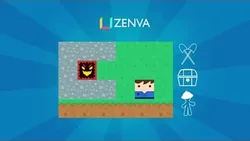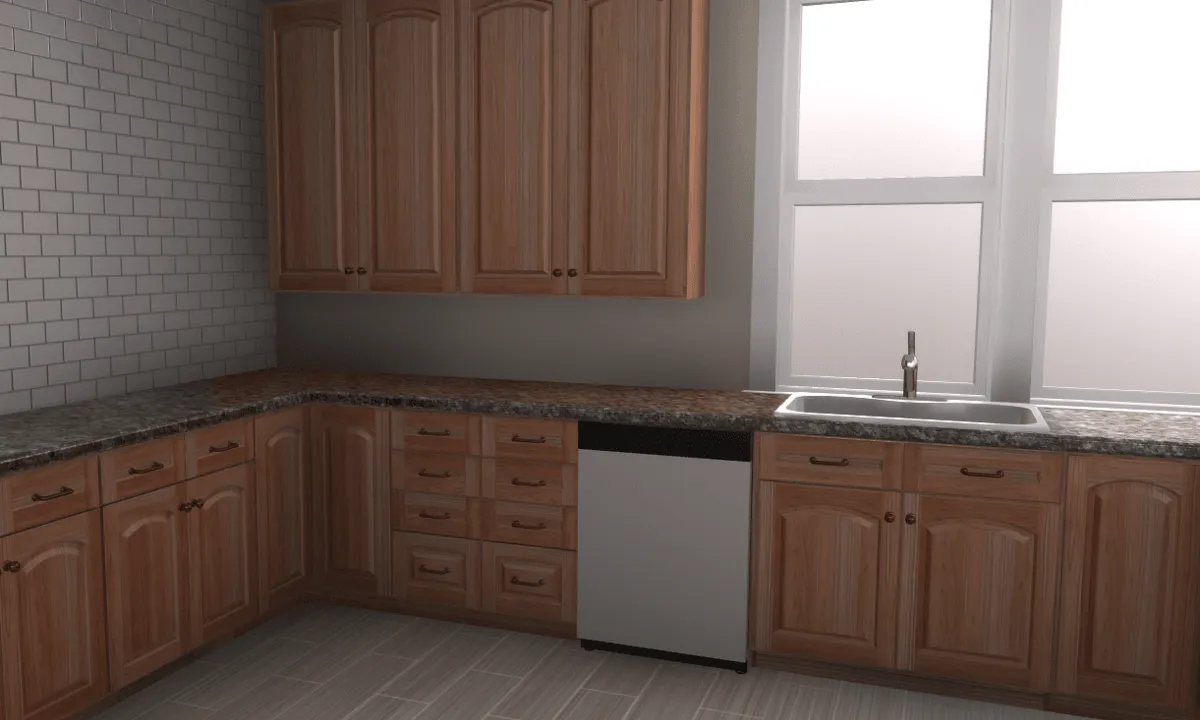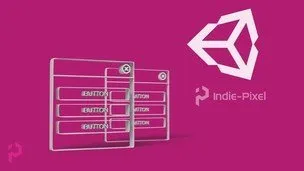
Unity Game Development 
This course provides an overview of Unity game development, including how to apply transformations to an object, use shaders, materials, and textures, scale objects, and create parent-child relationships. It also introduces scripting with the Unity Editor and how to use variables. ▼
ADVERTISEMENT
Course Feature
![]() Cost:
Cost:
Free
![]() Provider:
Provider:
Youtube
![]() Certificate:
Certificate:
Paid Certification
![]() Language:
Language:
English
![]() Start Date:
Start Date:
On-Demand
Course Overview
❗The content presented here is sourced directly from Youtube platform. For comprehensive course details, including enrollment information, simply click on the 'Go to class' link on our website.
Updated in [February 21st, 2023]
What does this course tell?
(Please note that the following overview content is from the original platform)
How to Apply Transformations to an Object in Unity.
An Overview of Shaders, Materials, and Textures in Unity.
Scaling Objects and Parent-Child Relationships in Unity.
Introduction to Scripting with the Unity Editor.
How to Use Variables in Unity.
Objected Oriented Programming in Unity.
Building the Balloon Popper in Unity - Part I.
Building the Balloon Popper in Unity - Part II.
Vectors and the Update Method in Unity.
Making a Game Design Document for a Unity Game.
Create Your FIRST SHADER in Shader Graph.
Unity Shader Graph Tutorial - Installation and Setup.
Unity Tilemap Tutorial - Designing Your First Level.
Unity Beginners Tutorial - Create a 2D Platformer Controller.
Creating a Player Controller in Unity.
Setting up our FPS in Unity.
Intro to Creating an FPS in Unity.
Assets we Need to Create Huge Worlds in Unity.
Creating Terrain Using L3DT.
Intro to Creating Huge Worlds in Unity.
Unity Animation [02] - Animating a Player Character.
Unity Materials [01] - COLOR and TEXTURE.
Unity Materials [02] - EMISSION and TRANSPARENCY.
Unity Tutorial - TIPS and TRICKS for Optimising Scripts.
Detecting TOUCH Inputs - Unity Mobile Game Dev Tutorials.
PlayFab Tutorial - Multiplayer Back-End for Unity.
Unity Animation [01] - Animator Component Tutorial.
MATERIALS in Unity - Learn the Basics in 8 MINUTES.
Creating a Basic CAMERA FOLLOW Script in Unity.
Unity's NEW Input System Tutorial.
The DOPPLER EFFECT - Unity Audio Tutorial.
Unity RPG Tutorial - Project Setup.
Unity RPG Tutorial - Creating the Title Scene.
Unity RPG Tutorial Introduction - What You'll Learn.
Zenva Courses with Austin Gregory.
Unity Game Development Mini-Degree - Trailer.
Build a Text-Based RPG in Unity Part 1 - Creating the Character Class.
Build a Text-Based RPG in Unity Part 2 - Creating the Enemy Class.
How to Create an Inventory and a Crafting System in Unity.
Creating an Item Database for an Inventory System in Unity.
Creating the Crafting Recipe Class to Define our Inventory System in Unity.
An Introduction to Audio and Soundtracks in Unity.
Audio and Soundtracks in Unity: Creating the Unity Project.
Audio and Soundtracks in Unity: Building the Environment.
Unity UI Tutorial - Basic Data Model.
Unity UI Tutorial - Create a Level Selection Screen.
Unity CINEMACHINE - Advanced Camera Tutorial.
Prefab Painting Using Polybrush - Unity Tutorial.
We consider the value of this course from multiple aspects, and finally summarize it for you from three aspects: personal skills, career development, and further study:
(Kindly be aware that our content is optimized by AI tools while also undergoing moderation carefully from our editorial staff.)
1. You can learn how to apply transformations to an object in Unity, understand shaders, materials, and textures, and scale objects and parent-child relationships.
2. You can learn how to use variables, object-oriented programming, and scripting with the Unity Editor. You can also build a balloon popper in Unity and understand vectors and the update method.
3. You can learn how to make a game design document for a Unity game, create your first shader in Shader Graph, and use Unity Tilemap to design your first level.
4. You can learn how to create a 2D platformer controller, a player controller, and an FPS in Unity. You can also learn how to create huge worlds in Unity, animate a player character, and use materials in Unity.
5. You can learn how to detect touch inputs, use PlayFab for multiplayer back-end, create a basic camera follow script, use the Doppler effect, and build an RPG in Unity. You can also learn how to create an inventory and crafting system, use audio and soundtracks, and use Unity UI and Cinemachine.
[Applications]
After completing this Unity Game Development course, students will have a better understanding of how to apply Transformations to an Object in Unity, an Overview of Shaders, Materials, and Textures in Unity, Scaling Objects and Parent-Child Relationships in Unity, Introduction to Scripting with the Unity Editor, How to Use Variables in Unity, Objected Oriented Programming in Unity, Building the Balloon Popper in Unity - Part I and Part II, Vectors and the Update Method in Unity, Making a Game Design Document for a Unity Game, Create Your FIRST SHADER in Shader Graph, Unity Shader Graph Tutorial - Installation and Setup, Unity Tilemap Tutorial - Designing Your First Level, Unity Beginners Tutorial - Create a 2D Platformer Controller, Creating a Player Controller in Unity, Setting up our FPS in Unity, Intro to Creating an FPS in Unity, Assets we Need to Create Huge Worlds in Unity, Creating Terrain Using L3DT, Intro to Creating Huge Worlds in Unity, Unity Animation [02] - Animating a Player Character, Unity Materials [01] - COLOR and TEXTURE, Unity Materials [02] - EMISSION and TRANSPARENCY, Unity Tutorial - TIPS and TRICKS for Optimising Scripts, Detecting TOUCH Inputs - Unity Mobile Game Dev Tutorials, PlayFab Tutorial - Multiplayer Back-End for Unity, Unity Animation [01] - Animator Component Tutorial, MATERIALS in Unity - Learn the Basics in 8 MINUTES, Creating a Basic CAMERA FOLLOW Script in Unity, Unity's NEW Input System Tutorial, The DOPPLER EFFECT - Unity Audio Tutorial, Unity RPG Tutorial - Project Setup, Unity RPG Tutorial - Creating the Title Scene, Unity RPG Tutorial Introduction - What You'll Learn, Zenva Courses with Austin Gregory, Unity Game Development Mini-Degree - Trailer, Build a Text-Based RPG in Unity Part 1 - Creating the Character Class, Build a Text-Based RPG in Unity Part 2 - Creating the Enemy Class, How to Create an Inventory and a Crafting System in Unity, Creating an Item Database for an Inventory System in Unity, Creating the Crafting Recipe Class to Define our Inventory System in Unity, An Introduction to Audio and Soundtracks in Unity, Audio and Soundtracks in Unity: Creating the Unity Project, Audio and Soundtracks in Unity: Building the Environment, Unity UI Tutorial - Basic Data Model, Unity UI Tutorial - Create a Level Selection Screen, Unity CINEMACHINE - Advanced Camera Tutorial, Prefab Painting Using Polybrush - Unity Tutorial. After completing this course, students can apply their knowledge to create their own Unity games, create custom shaders, create custom materials, create custom textures, create custom scripts, create custom UI elements, create custom audio, and create custom levels. They can also use the knowledge gained to optimize their games for better performance and create more immersive experiences.
[Career Paths]
1. Unity Game Developer: Unity game developers are responsible for creating and developing video games using the Unity game engine. They must have a strong understanding of game design principles, scripting, and 3D modeling. They must also be able to work with a team of other developers to create a cohesive game. As the demand for more immersive and interactive games increases, the need for experienced Unity game developers is growing.
2. Unity Programmer: Unity programmers are responsible for writing code for video games using the Unity game engine. They must have a strong understanding of programming languages such as C# and JavaScript, as well as a good understanding of game design principles. As the demand for more complex and interactive games increases, the need for experienced Unity programmers is growing.
3. Unity Artist: Unity artists are responsible for creating 3D models, textures, and animations for video games using the Unity game engine. They must have a strong understanding of 3D modeling, texturing, and animation principles. As the demand for more immersive and interactive games increases, the need for experienced Unity artists is growing.
4. Unity Level Designer: Unity level designers are responsible for creating levels for video games using the Unity game engine. They must have a strong understanding of game design principles, scripting, and 3D modeling. They must also be able to work with a team of other developers to create a cohesive game. As the demand for more immersive and interactive games increases, the need for experienced Unity level designers is growing.
Course Provider

Provider Youtube's Stats at AZClass
Over 100+ Best Educational YouTube Channels in 2023.
Best educational YouTube channels for college students, including Crash Course, Khan Academy, etc.
AZ Class hope that this free Youtube course can help your Unity skills no matter in career or in further education. Even if you are only slightly interested, you can take Unity Game Development course with confidence!
Discussion and Reviews
0.0 (Based on 0 reviews)
Explore Similar Online Courses

Learn how to sing better in 10 lessons

How to Process Your Emotions- Learn to Control your Feelings

Python for Informatics: Exploring Information

Social Network Analysis

Introduction to Systematic Review and Meta-Analysis

The Analytics Edge

DCO042 - Python For Informatics

Causal Diagrams: Draw Your Assumptions Before Your Conclusions

Whole genome sequencing of bacterial genomes - tools and applications

Learn Unity 3D and C# By Making a Full Game (2023)

Asset Creation and Management


Start your review of Unity Game Development